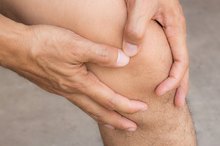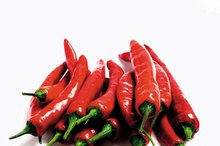Heat and Headaches
Although sunny, hot weather is synonymous with summer fun, not everyone enjoys the heat. For some people, hot weather can trigger headaches 2. While this weather connection isn't well understood, headaches are known to be related to dehydration and other heat-related illnesses. So if hot weather tends to be one of your headache triggers, take steps to keep your body cool, reduce the risk of heat-related illness -- and hopefully avoid the headache in the first place.
About Headaches
A headache is a pain that occurs in the upper neck, face, scalp or inside the head 6. Headaches are considered primary if they are not related to an underlying medical condition, or secondary if caused another issue such as a sinus infection or neck injury. The cause of most primary headaches, such as cluster headaches, tension headaches and migraines, is not fully understood but is related to dysfunction or overactivity of the pain-sensitive features in the head.
Weather Triggers
How to Cure a Sun-Exposure Headache
Learn More
Headaches have been linked to several weather components, including air pressure, humidity, wind -- and air temperature. Hot weather, for instance, is a common headache trigger. In fact, a study of 7054 people found that each 9 degree Fahrenheit increase in temperature upped the risk of severe headache by 7.5 percent. Although dehydration could be responsible for some of these heat-related headaches, it's unclear why heat triggers headaches in well-hydrated individuals. If you have headaches that seem connected to hot weather, stay well hydrated, keep your body cool and do your best to shield yourself from the heat.
Heat-Related Illness
Headaches can also be caused by a loss of body water and electrolytes -- from spending too much time in the heat. Severe dehydration can lead to painful cramps, particularly in the legs. If allowed to progress, these heat cramps can lead to heat exhaustion, which is characterized by pale and moist skin, nausea, vomiting, weakness, dizziness and headache 1. If the condition worsens, sweating becomes impaired and the body can't stay cool -- and heat stroke can develop 1. Heat stroke is a dangerous condition which can lead to escalating body temperatures, confusion, loss of consciousness -- and death.
- Headaches can also be caused by a loss of body water and electrolytes -- from spending too much time in the heat.
Staying Cool and Hydrated
How Humidity Causes Joint Pain
Learn More
If you experience a headache when you're in a hot environment, find a way to stay cool. Get out of the sun, find a shady place, sit in front of a fan or place cool cloths on the skin. Drink a sports drink that contains sugar and salt, in order to rehydrate your body. Take a cool shower or bath, if possible. If you're wearing too much clothing, take off extra layers. Pain-relieving medications, such as acetaminophen (Tylenol) or ibuprofen (Advil) may help if hydraton and body-cooling measures don't relieve the pain. If you suffer from headaches regularly, ask your doctor about the best medication to treat your symptoms.
- If you experience a headache when you're in a hot environment, find a way to stay cool.
- Pain-relieving medications, such as acetaminophen (Tylenol) or ibuprofen (Advil) may help if hydraton and body-cooling measures don't relieve the pain.
Warnings
While most headaches go away in time with treatment, some symptoms will warrant medical attention. If heat exhaustion or heat stroke is suspected, seek medical attention as soon as possible 1. Also see a doctor immediately if you have a severe headache accompanied by a fever and stiff neck, or a headache that suddenly occurs and causes severe pain. Other reasons to see a doctor less urgently are if you are experiencing frequent or severe headaches, or if the headaches are accompanied by symptoms such as unexplained weight loss, worsening vision.
Reviewed by Kay Peck, MPH RD
- While most headaches go away in time with treatment, some symptoms will warrant medical attention.
- Other reasons to see a doctor less urgently are if you are experiencing frequent or severe headaches, or if the headaches are accompanied by symptoms such as unexplained weight loss, worsening vision.
Related Articles
References
- Merck Manual: Heat Exhaustion
- Neurology: Weather and Air Pollution as Triggers of Severe Headaches
- Cephalagia: An International Journal of Headache: Migraine and Weather: A Prospective Diary-Based Analysis.
- PLoS One: Temporal Associations between Weather and Headache: Analysis by Empirical Mode Decomposition
- Journal of Neurology: Weather Sensitivity in Migraineurs
- National Institute of Neurological Disorders and Stroke: Headache: Hope Through Research
- American Academy of Neurology. What is a neurologist?
- MedlinePlus. Migraine. Updated September 16, 2019.
- Cleveland Clinic. Tension-type headaches. Updated July 18, 2014.
- Cleveland Clinic. Cluster headaches. Updated July 22, 2014.
- Anxiety and Depression Association of America. Headaches.
- World Health Organization. Headache disorders.
- Schwedt TJ. Headache “red flags”: when to see your doctor. American Migraine Foundation. 2015.
- American Academy of Neurology. What is a neurologist?
- Michel O. Headache: Otorhinolaryngological aspects. HNO. 2016;64(1):61-71; quiz 72-73. doi:10.1007/s00106-015-0106-6
- American College of Allergy, Asthma & Immunology. Allergy headaches: overview. Updated April 17, 2018
- Johns Hopkins Medicine. Temporomandibular disorder (TMD)
- National Headache Foundation. Children’s headache disorders.
- Centers for Disease Control and Prevention. Stroke signs and symptoms. Updated January 31, 2020.
Writer Bio
Lisa Sefcik has been writing professionally since 1987. Her subject matter includes pet care, travel, consumer reviews, classical music and entertainment. She's worked as a policy analyst, news reporter and freelance writer/columnist for Cox Publications and numerous national print publications. Sefcik holds a paralegal certification as well as degrees in journalism and piano performance from the University of Texas at Austin.









